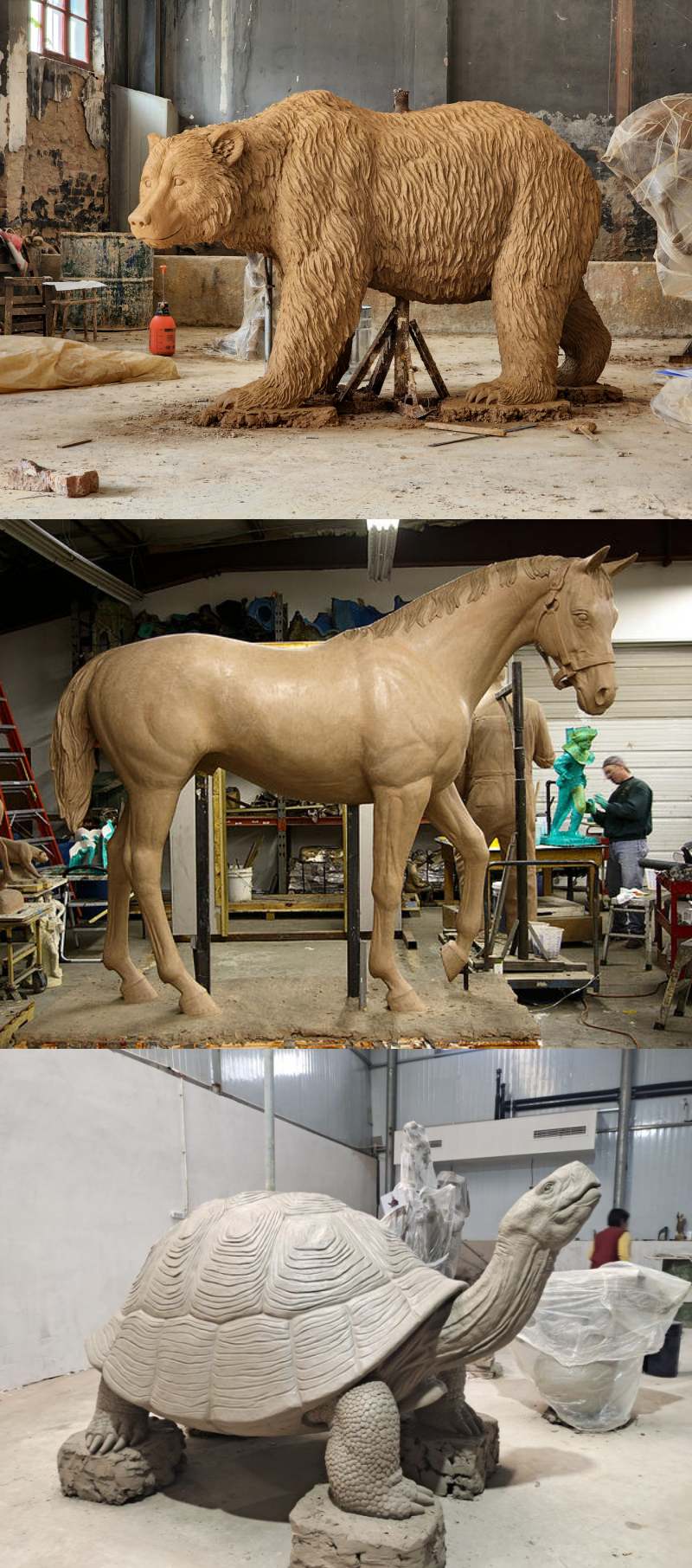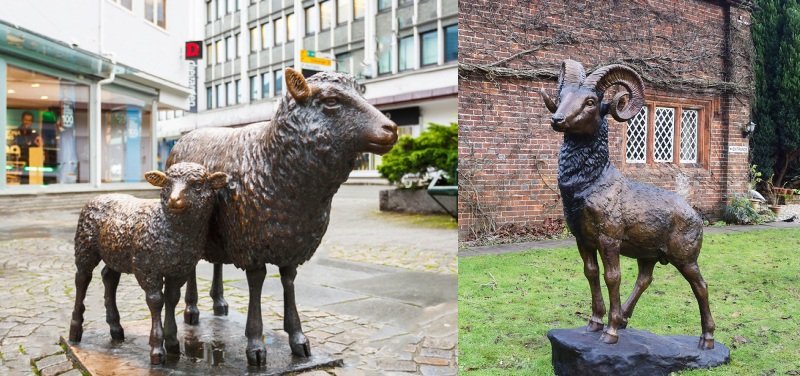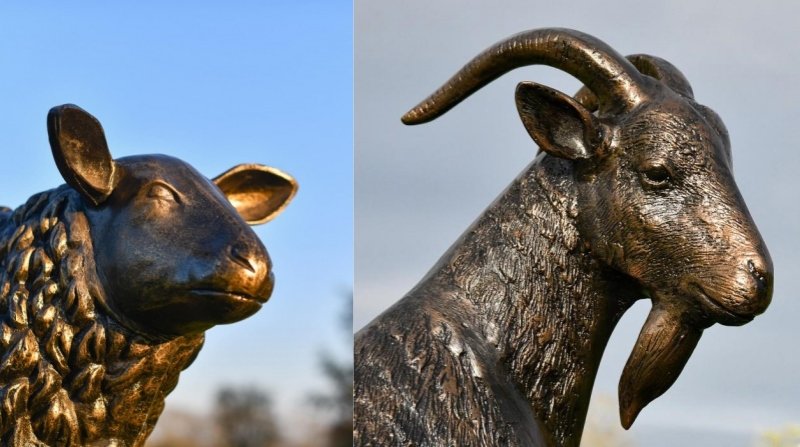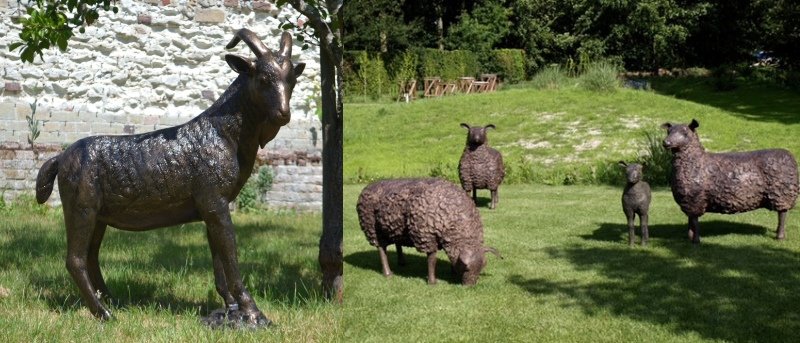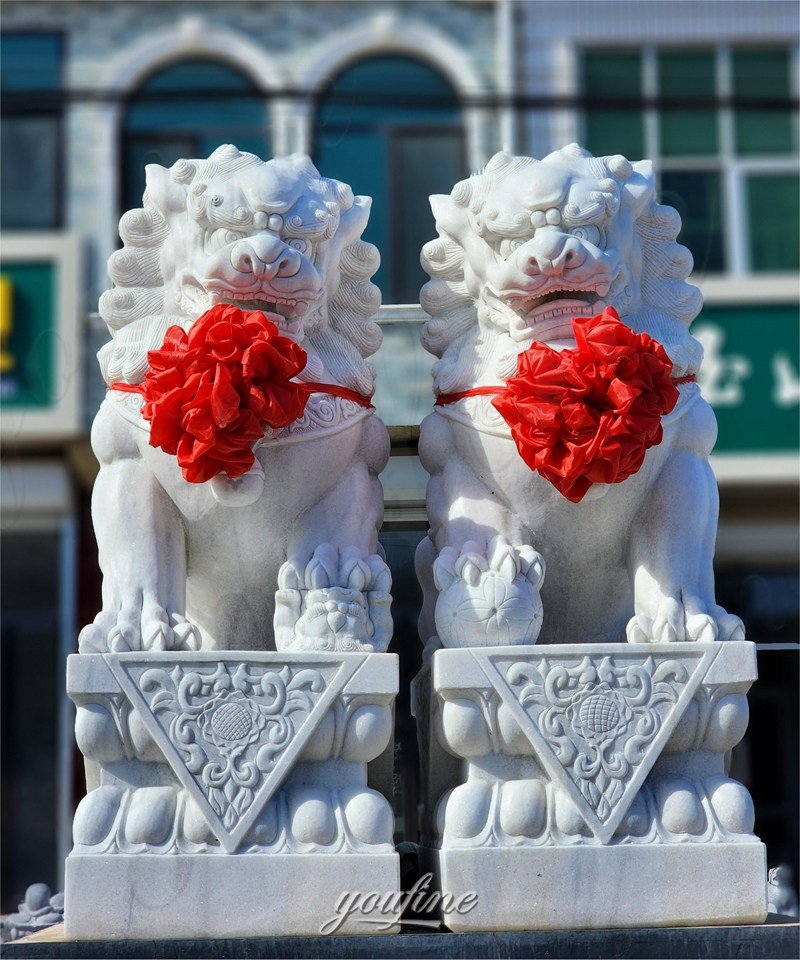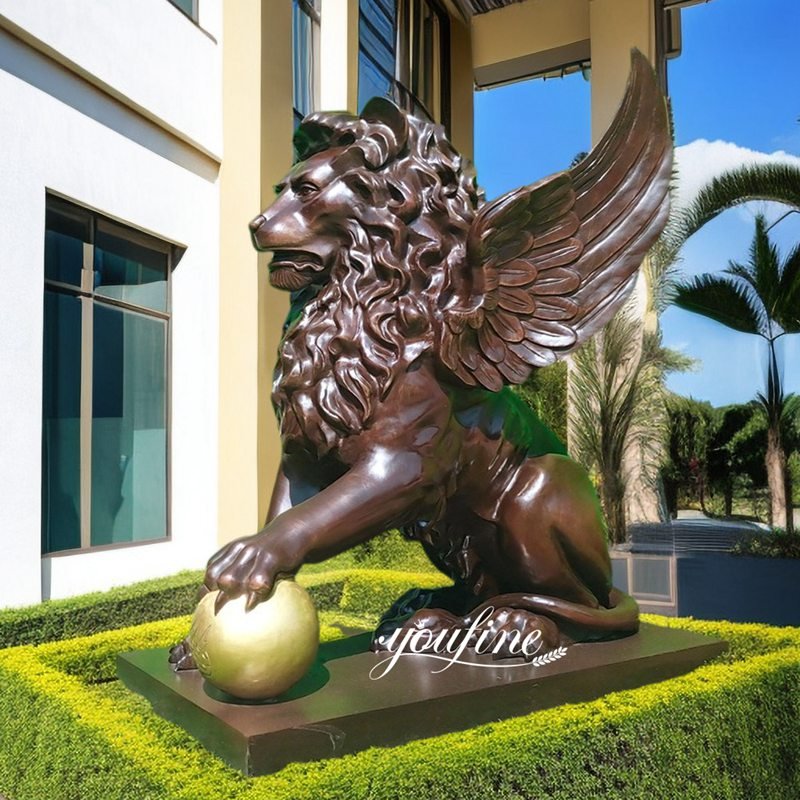As a bronze sculpture manufacturing factory with 40 years of experience, YouFine has cast countless bronze animal sculptures for customers. Among them, many clients want to customize goat or sheep bronze sculptures for their home farms or zoos. However, there are also many clients who buy and take home as artwork collections simply because they appreciate the appearance of bronze sheep sculptures. But do you know how to tell the difference between a goat and a sheep?
Difference 1: Different Coats
One of the most notable differences between sheep and goats is the type of fur they have. Sheep have a coat of different thicknesses, most of which are curly; goat hairs are thick bristles and fluff, hard and straight. Goats have white hair all over their bodies, while sheep have a thick, mostly brown wool coat. Most sheep have thick wool fur and need to be sheared annually to keep them from overheating in the summer. Goats don’t need to be sheared.
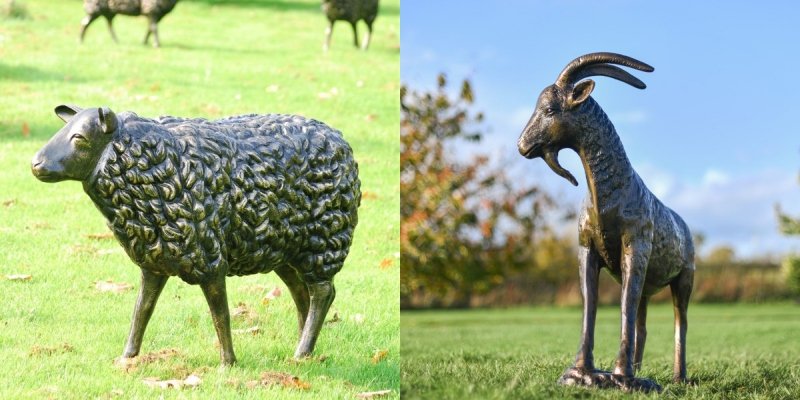
Difference 2: Different Horns
Most sheep have no horns, only a few have horns. While most goats have horns, only a few have no horns. In those animals that do, however, the horns are often thick and impressively curled on one side of the head. Many goats have horns, and their horns are narrower and shorter. They also usually point more up and back, and don’t curl.
Difference 3: Different Tails
An easy way to tell the difference between goats and sheep is to look at their tails. Goats’ tails are almost always short and turned up unless they are scared or sick, while sheep’s tails droop downwards. Goats have short tails that usually point upwards unless frightened or ill. In contrast, the tail of the cotton sheep is downward. Most sheep are born with long tails, which are docked at birth for hygienic reasons and to help prevent “fly attacks”. The long tail is often covered in feces, which attracts flies. Fly attacks are caused when flies lay their eggs on the backs of sheep. However, some sheep breeds have naturally short tails, but even the tails point downward.
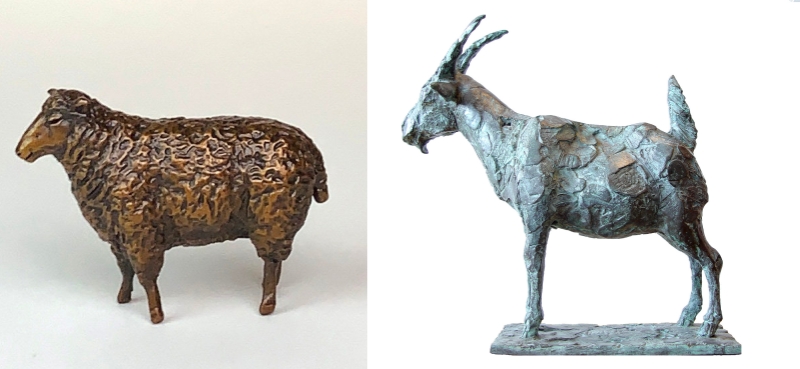
Difference 4: Temperament
Sheep are known for their relatively aloof and distant behavior, as well as their strong herd instincts. When they are threatened or going through a storm, they naturally gather in a group and quickly become distressed when separated from other sheep. Despite their cute and innocent appearance, goats have a knack for finding trouble and finding a way out! They have an extremely independent and curious nature and often like to investigate things. Goats are very agile, known for their ability to jump or climb, and need good fencing to keep them inside.
YouFine’s Bronze Animals Sculpture
- In order to cast more realistic bronze goat and sheep sculptures, YouFine artists will raise these animals next to the factory so that it is easier to observe the animal’s body structure and habits.
- Talent plus hard work can produce an excellent artist. Each artist at YouFine has an average of about 20 years of experience. Long-term practice plus practice can finally cast bronze sculptures that satisfy customers.
- The clay mold is the basis for making a bronze animal sculpture, because it directly determines the appearance of the whole bronze sculpture. YouFine has professional masters who are responsible for making animal clay models. They will strive for excellence in the production process and lay a professional foundation for casting a bronze sculpture.
